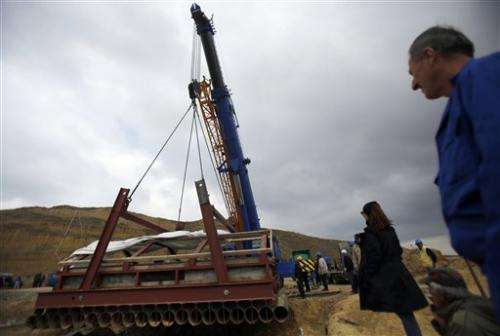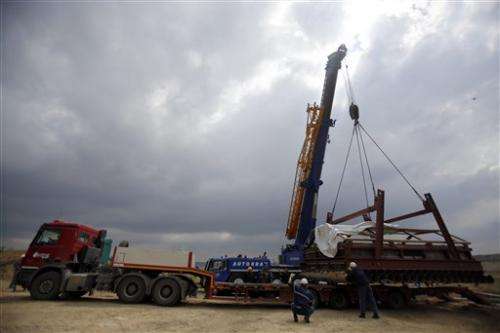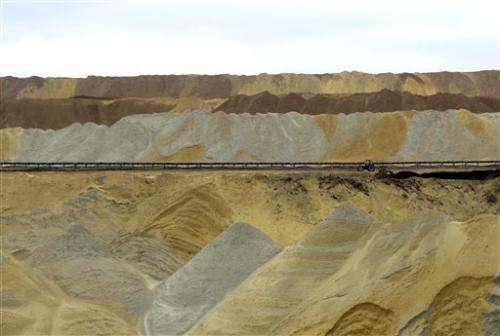Serbia experts use heavy machinery to move mammoth

Serbian archaeologists on Friday used heavy machinery to move a female mammoth skeleton—believed to be one million years old—from an open mine pit where it was unearthed nearly five years ago.
Workers with cranes and bulldozers worked carefully for hours at the Kostolac coal mine in eastern Serbia to transfer the mammoth, known as Vika, to an exhibition area several kilometers away.
Chief archaeologist Miomir Korac told The Associated Press that preparations had lasted several months. He said that archaeologists secured Vika in a 60-ton structure of rubber and sand to avoid any damage.
"We are extremely sad and heavy-hearted about this, but we had to move her," Korac said. "It was just too complicated to leave the mammoth where it was found; that would have required securing a 500-square-meter (5,000-square-foot) area right in the heart of the coal mine."
Serbian archaeologists say Vika is a southern mammoth, or mammuthus meridionalis, one of the oldest species found in Europe, which originated from northern Africa and did not have fur.
She was discovered during routine excavation at the coal mine at 27 meters (90 feet) below ground. Vika is more than 4 meters (13 feet) high, 5 meters (16 feet) long and weighed more than 10 tons.
Two years ago, an entire mammoth field of more recent date was also discovered in Kostolac, while another female mammoth skeleton, about 500,000 years old, was discovered in northern Serbia in 1996.

That skeleton was named Kika, and is on display in the northern town of Kikinda, near the border with Hungary.

© 2014 The Associated Press. All rights reserved.





















